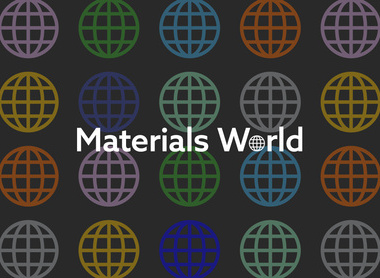Events, awards & competitions
Opportunities to engage with IOM3 and benefit from networking, knowledge exchange and recognition across all disciplines
The origin of IOM3 goes back to the Iron and Steel Institute which was established in 1869. Its first Royal Charter dates from 1899, and its most recent one from June 2002 when the IOM3 name was created from the merger of the Institute of Materials and the Institution of Mining and Metallurgy. The Institute of Packaging joined the combined body in 2005, followed by the Institute of Clay Technology in 2006, the Institute of Wood Science in 2009, and the Institute of Vitreous Enamellers in 2010.”
A timeline of the mergers that led to the modern-day IOM3 was created as a commemorative artwork to celebrate the 150th anniversary in 2019. This is on display in our London building.
The Institute of Materials arose out of a merger of The Institute of Metals, The Institute of Ceramics and The Plastics and Rubber Institute in 1993. The British Composites Society (relaunched in 2007) became part of the new institute at the same time. The Institute has a long history of mergers and can trace its roots back to 1869 when The Iron and Steel Institute was founded as a protectionist society. The original members were British Victorian ironmasters who were worried about competition from Europe.
The Iron and Steel Institute soon realised the benefits obtained by the open exchange of information, rapidly developing into one of the leading learned societies and gaining its Royal Charter from Queen Victoria in 1899. Shortly after this, the first Institute of Metals (1908) was formed as a learned society covering non-ferrous metals. Both these early institutes had active programmes of conferences and seminars, published well respected journals, and attracted scientists, engineers, accountants, lawyers and doctors.
The Institution of Metallurgists was founded in 1945 to grant qualifications to metallurgists, and a Royal Charter was granted in 1975. Following several mergers, The Institute of Metals (which combined the learned society and professional role) was formed in 1985.
The history of the mining disciplines has two parallel streams. The formation of learned societies based around the UK coalfields began in response to the need to share best practice to address the numbers of disasters occurring in the Industry. At least eight bodies formed between 1838 and 1878 and these federated to form The Institution of Mining Engineers (IMinE) in 1889. The Institution of Mining and Metallurgy (IMM) was formed in 1892 by leading hard-rock mining professionals, as the industry throughout the British Empire and beyond was seen as too big to be served successfully by one professional body.
Both these bodies were granted Royal Charters on the same day (9 February) in 1915.
The Institution of Mining Engineers absorbed the National Association of Colliery Managers (1968) and The Institution of Mining Electrical and Mining Mechanical Engineers (1995), before itself being absorbed into The Institution of Mining and Metallurgy in 1998.
In parallel with these developments in the metals field, institutes were being developed in the ceramics, plastics and rubber fields.
The Staffordshire Ceramics Society was formed in 1900 in the heart of the rapidly developing pottery industry in Stoke-on-Trent. In 1903-1916 became the English Ceramic Society and 1916-1938 the Ceramic Society This later broadened to become The British Ceramic Society in 1938 to 1984 which operated as a learned society organising lectures and seminars. Following the same format as had taken place in the metals field, the Institute of Ceramics was formed as a professional body for ceramics and again, in the same way as had happened for metals, the two bodies merged to become The Institute of Ceramics in 1986 which later merged with the Institute of Metals and the Plastics and Rubber institute to become the Institute of Materials in 1993.
The Rubber Club of Great Britain was formed in July 1921. The Club changed its name to the Institution of the Rubber Industry (IRI) in 1925 followed by The Plastics Institute (PI) in 1931. These merged to form The Plastics and Rubber Institute (PRI) in 1975.
In the late 1980s, discussions began to take place on a further merger to form an Institute of Materials. All of these institutes had by that time stopped carrying out their own examinations and were accrediting courses in universities and colleges. Increasingly, these courses were broadening to cover many different materials, other than concentrating specifically on metallurgy, polymers or ceramics. The institutes also felt they would have greater strength and more influence by being combined into one larger body.
The need to work across boundaries was highlighted by the formation of the British Composites Society in the late 1980s, as the composites community felt that none of existing institutes covered its needs. The British Composites Society covered metals, ceramics and polymer based composites, and when it became clear that an Institute of Materials was to be formed, it agreed it would also join.
The Institute of Materials merger was a difficult issue. Although the governing bodies of the three institutes could see all the advantages of a merger, many members felt that the identity of their institutes would be lost. Each institute needed a 75% majority in favour of merger, and when the first vote took place this was not quite achieved. Great efforts were then made to communicate with members and spell out the advantages of merger.
A successful vote took place in November 1991 and the new Institute of Materials was formed in January 1993. It was this body that then merged with the Institution of Mining and Metallurgy in 2002 to form the current Institute of Materials, Minerals and Mining.
The Institute of Packaging (IoP) had been formed in 1947 in response to the post-war need to improve the quality of packaging in the UK, to recognise professional standards in the packaging industry and to educate and inform. The Institute was recognised at the highest level when, in the first issue of its journal, the then Chancellor of the Exchequer, Sir Stafford Cripps, predicted our modern concerns with sustainability when he wrote that it was ‘vital that the best and most economical use of packaging materials shall be made. Intelligent design must replace the lavish use of materials’. Furthermore he criticised the manufacturers of the day for not maintaining ‘the high standards learnt in the War in the packaging for the Services’ and maintained that the remedy lay in education.
Despite high ambitions and the growth of the industry, the Institute was always a relatively small organisation. In the early part of the 21st Century the realities of remaining independent began to be recognised by members and, following discussions with several other Institutes, a decision was taken to merge with IOM3 early in 2005.
The Institute of Clay Technology (ICT) was formed in 1927 as the National Association of Clayworks Managers, originally with a particular emphasis on management and production matters. Over the years the Institute adapted to changes in the industry, growing to embrace all clay industry related disciplines, from materials extraction, through production, marketing, finance, administration, management and strategy. The ICT merged with IOM3 in 2006.
The Institute of Wood Science (IWSc) was incorporated in 1955 and was registered as a charity in 1998. As the professional body for the timber and allied industries, it aimed to promote and encourage a better understanding of timber, wood-based materials and associated timber processes and products. The IWSc represented those employed within the timber importing, merchanting, manufacturing and user industries, together with those in education and research.
An agreement was concluded between the trustees of IOM3 and IWSc to transfer all IWSc members and activities to the Institute in the Summer of 2009. The agreement also provided for IOM3 to take responsibility for the administration and coordination of the Journal of Wood Science (since renamed), the member magazine Wood Focus, and all training course activity. To facilitate the integration of membership benefits and improved networking of Wood Science members in the materials community, a new group was formed within the IOM3 divisional structure to house interested members.
The Institute of Vitreous Enamellers was founded in 1934 by a group of enamelling companies who felt the need for a body to disseminate knowledge and provide training in the then rapidly increasing industrialisation of the process of vitreous enamelling. The IVE periodical journal, initially titled the IVE Bulletin and latterly the Vitreous Enameller, was the only English language periodical worldwide on the subject of vitreous enamel and at its peak was distributed in over 30 countries. The IVE also produced most of the quality and performance standards related to vitreous enamel and its processes, which have been adopted by national and international standards authorities worldwide.
The Trustees of IOM3 signed a Memorandum of Understanding with IVE in February 2010, and the activities and membership of IVE were taken into IOM3 in November 2010.
IOM3 now has a membership of over 15,000 of which nearly 25% of reside overseas. Members come from all levels within industry and academia, from students to technicians to managing directors and chairs of major companies. IOM3 today spans a broad spectrum of materials and covers all aspects of materials production, processing, design and end use. Industries include, for example, biomedical, electronics, smart materials, aerospace, automotive and energy generation as well as the traditional materials industries such as the steel and heavy clay industry.
The Institute and its predecessors occupied 1 Carlton House Terrace, London SW1, from 1972, moving to its current headquarters at 297 Euston Road, London NW1, in 2015.

Opportunities to engage with IOM3 and benefit from networking, knowledge exchange and recognition across all disciplines

An introduction to IOM3 activities and resources to support 5 to 19 education

Our flagship members' magazine covering all aspects of the materials cycle
We offer a technical enquiry service and library services to members, non-members, industry, academia and the public

IOM3 currently accredits a large number of programmes at over 25 universities in the UK and abroad along with a number of company-based schemes

IOM3 Technical Communities focus on all aspects of materials science, technology and engineering; mining, minerals and exploration; and materials applications from nanotechnology to construction.